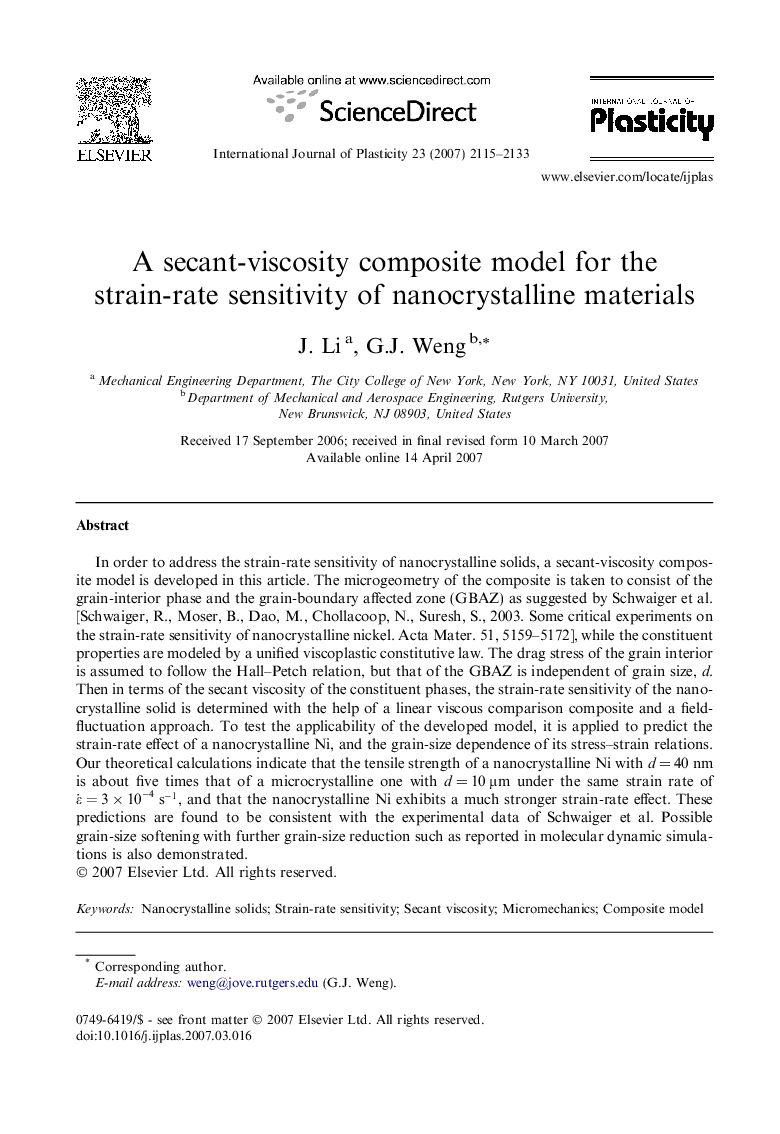| Article ID | Journal | Published Year | Pages | File Type |
|---|---|---|---|---|
| 787723 | International Journal of Plasticity | 2007 | 19 Pages |
In order to address the strain-rate sensitivity of nanocrystalline solids, a secant-viscosity composite model is developed in this article. The microgeometry of the composite is taken to consist of the grain-interior phase and the grain-boundary affected zone (GBAZ) as suggested by Schwaiger et al. [Schwaiger, R., Moser, B., Dao, M., Chollacoop, N., Suresh, S., 2003. Some critical experiments on the strain-rate sensitivity of nanocrystalline nickel. Acta Mater. 51, 5159–5172], while the constituent properties are modeled by a unified viscoplastic constitutive law. The drag stress of the grain interior is assumed to follow the Hall–Petch relation, but that of the GBAZ is independent of grain size, d. Then in terms of the secant viscosity of the constituent phases, the strain-rate sensitivity of the nanocrystalline solid is determined with the help of a linear viscous comparison composite and a field-fluctuation approach. To test the applicability of the developed model, it is applied to predict the strain-rate effect of a nanocrystalline Ni, and the grain-size dependence of its stress–strain relations. Our theoretical calculations indicate that the tensile strength of a nanocrystalline Ni with d = 40 nm is about five times that of a microcrystalline one with d = 10 μm under the same strain rate of ε˙=3×10-4s-1, and that the nanocrystalline Ni exhibits a much stronger strain-rate effect. These predictions are found to be consistent with the experimental data of Schwaiger et al. Possible grain-size softening with further grain-size reduction such as reported in molecular dynamic simulations is also demonstrated.
